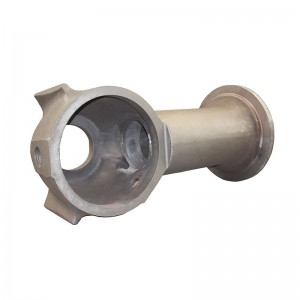pro . 18, 2024 16:10 Back to list
Leading Manufacturer of High-Quality Casting Products for Diverse Industries
Understanding the World of Casting Products Manufacturing
Casting is a crucial manufacturing process that has been around for thousands of years, and it remains an integral part of modern industry. As a specialized technique, casting allows for the creation of complex shapes and sizes that would be difficult or impossible to achieve through other manufacturing methods. In this article, we will delve into the intricacies of casting products manufacturing, exploring its various techniques, benefits, and applications.
The Casting Process
Casting involves pouring liquid material—typically molten metal, plastic, or glass—into a mold to create a desired shape. The process generally follows several key steps
1. Pattern Making A pattern (usually made of metal, wood, or plastic) is created to serve as a model for the final product. The pattern must be slightly oversized to account for material shrinkage during cooling.
2. Mold Creation Once the pattern is ready, a mold is created around it. The mold can be made from sand, metal, or other materials, depending on the specifications and production volume.
3. Melting and Pouring The material to be cast is melted in a furnace and poured into the prepared mold. The temperature, pouring speed, and technique used can significantly affect the final product's properties.
4. Cooling and Solidification The molten material cools and solidifies within the mold. The time required for cooling depends on several factors, including the material used and the thickness of the part.
5. Removal and Finishing Once solidified, the cast part is removed from the mold. It may require additional finishing processes, such as sanding, machining, or heat treatment, to achieve the necessary tolerances and surface finishes.
Types of Casting Methods
There are several casting methods employed in manufacturing, each suited for different applications and materials
1. Sand Casting The most common and economical method, sand casting uses a mixture of sand and a binder to create molds. It is ideal for large parts and low-to-medium production volumes.
casting products manufacturer

2. Die Casting This process involves forcing molten metal into a mold under high pressure. Die casting is excellent for producing high volumes of precise, complex shapes, primarily from non-ferrous metals like aluminum and zinc.
3. Investment Casting Also known as lost-wax casting, this method uses a wax pattern coated with a ceramic shell. Once the shell is hardened, the wax is melted away, leaving a cavity for the molten metal. This method is often used for intricate shapes and high-quality finishes in industries like aerospace and medical devices.
4. Permanent Mold Casting In this technique, a reusable metal mold is used to produce parts, offering better surface finish and dimensional accuracy than sand casting.
5. Centrifugal Casting Used primarily for cylindrical parts, this method involves pouring material into a rotating mold, using centrifugal force to distribute the molten metal evenly.
Benefits of Casting Products Manufacturing
Casting offers numerous advantages
- Design Flexibility Complex shapes and internal features can be easily introduced during the casting process, allowing for innovative designs. - Material Efficiency The casting process minimizes waste, as materials can be recycled and reused. - Cost-Effectiveness Especially for large production runs, casting can reduce the overall manufacturing costs due to fewer machining operations required after casting. - Diverse Material Options Various materials, including ferrous and non-ferrous metals, plastics, and ceramics, can be utilized depending on the application.
Applications of Casting Products
Casting products are utilized across various industries, including automotive, aerospace, construction, and consumer goods. Components such as engine blocks, turbine blades, pump casings, and decorative items are often produced using casting techniques.
Conclusion
In conclusion, casting products manufacturing is a vital aspect of modern production practices. With its ability to create intricate, high-quality products efficiently and cost-effectively, casting continues to play a significant role in meeting the demands of various industries. As technology advances, we can expect further innovations in casting techniques, materials, and applications, solidifying its importance in the future of manufacturing. Whether for large-scale industrial applications or bespoke creations, the versatility of casting ensures its ongoing relevance in a rapidly evolving world.
-
Premium Cast Iron Water Main Pipe for Robust Infrastructure
NewsAug.27,2025
-
A-Rated Cast Aluminum Boilers: High-Efficiency Condensing Gas & LPG
NewsAug.26,2025
-
OEM Cast Silicon Aluminum Alloy Heat Exchanger | Custom & High Performance
NewsAug.25,2025
-
Centrifugally Cast Iron Water Main Pipe | Ductile Iron Solutions
NewsAug.24,2025
-
Durable Cast Steel Concrete Pipe Mold Bottom Rings & Base Trays
NewsAug.23,2025
-
Centrifugally Cast Iron Water Main Pipe for Reliable Mains
NewsAug.22,2025


